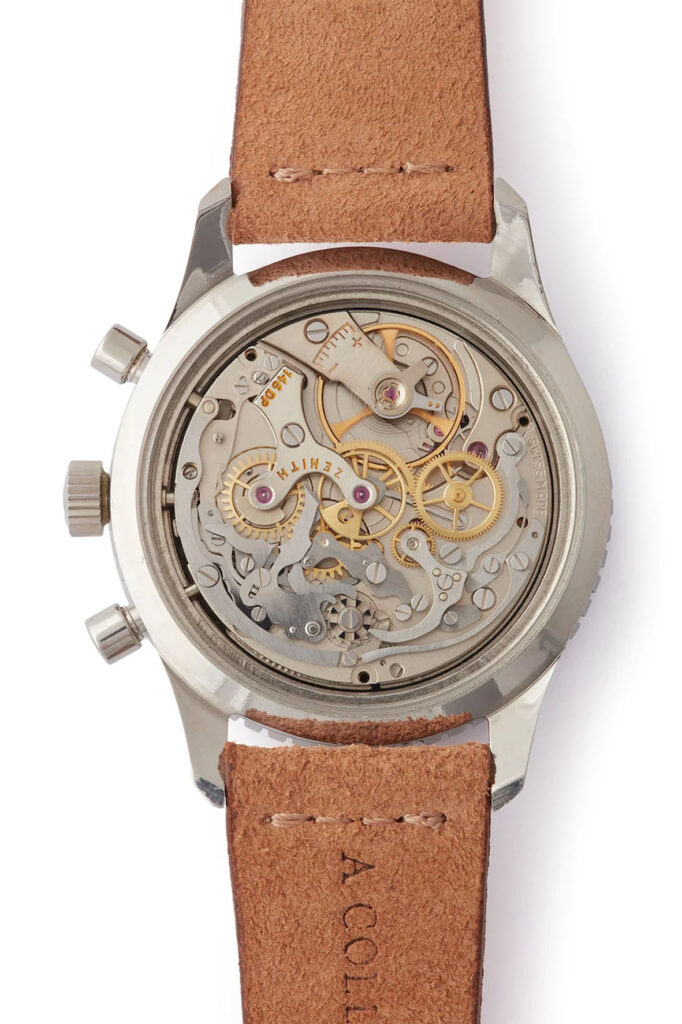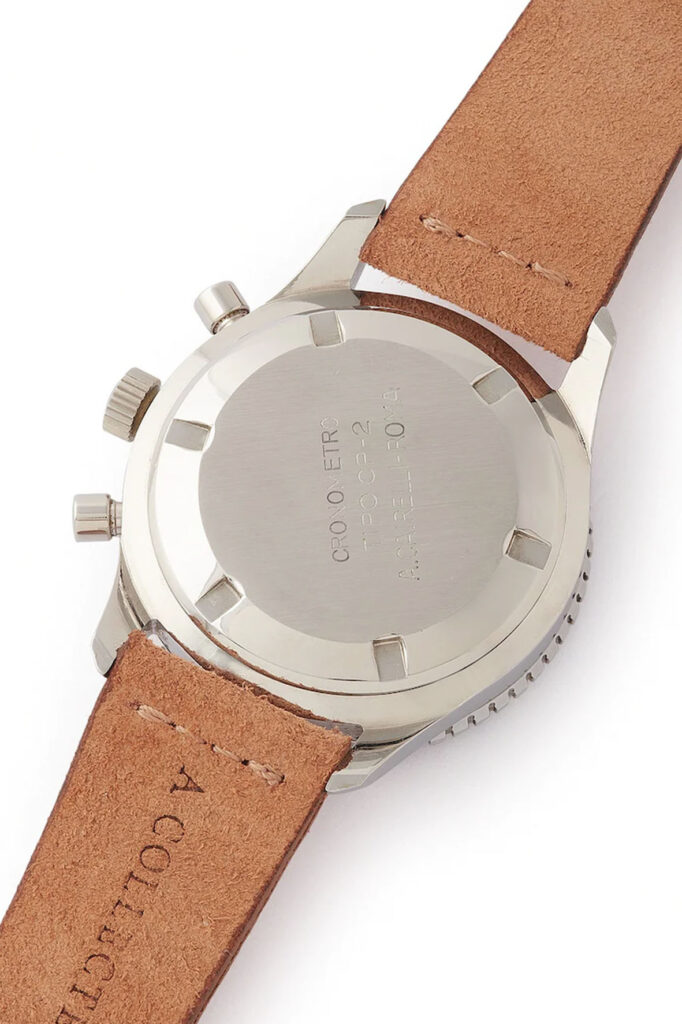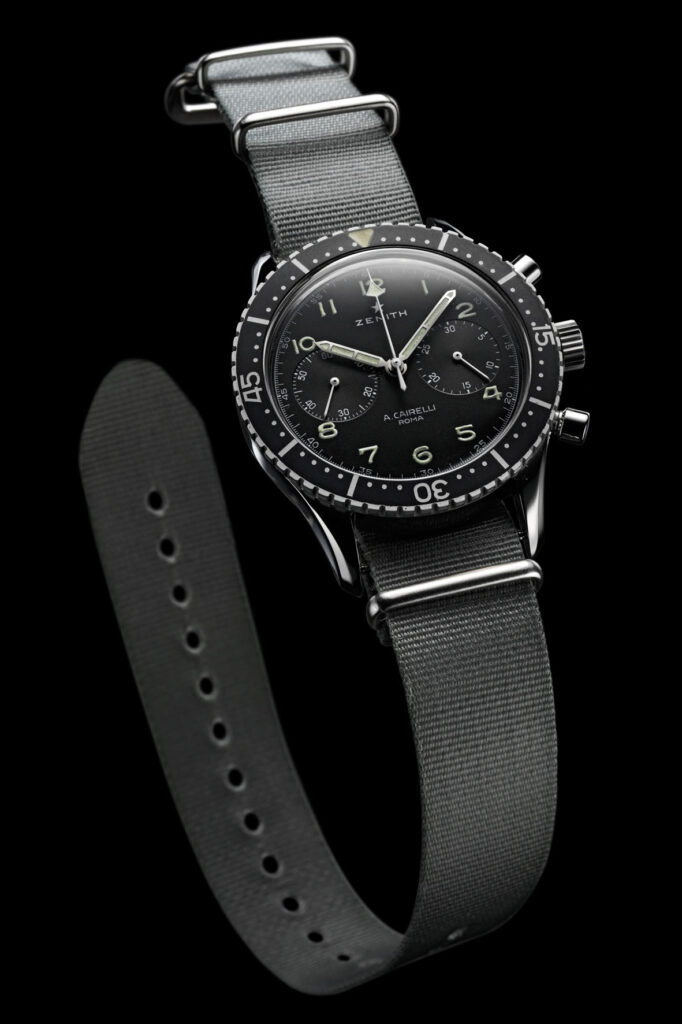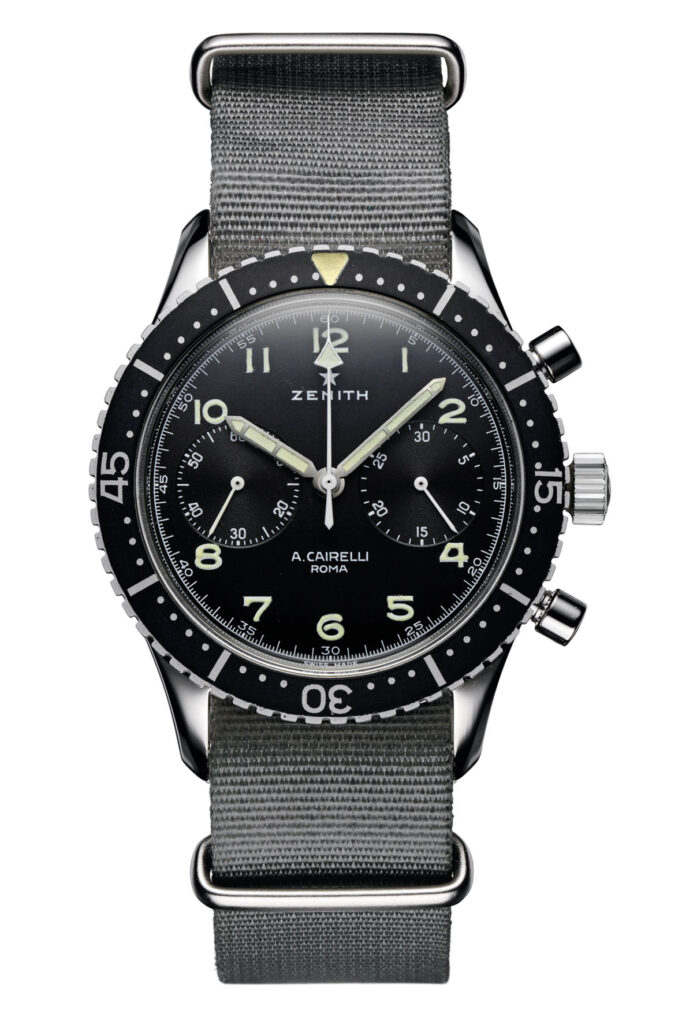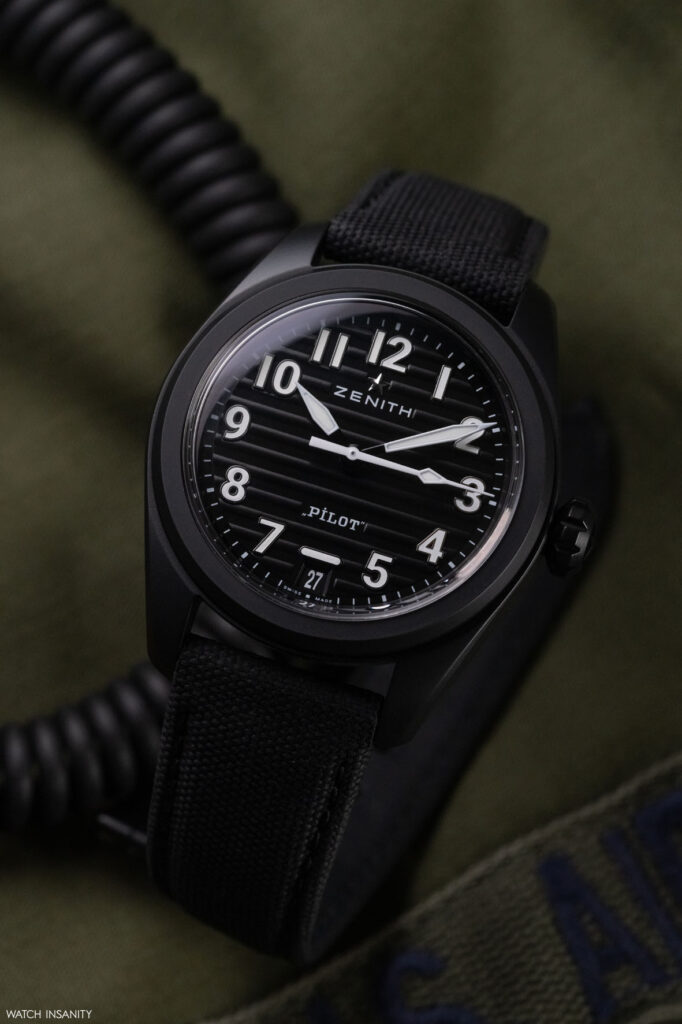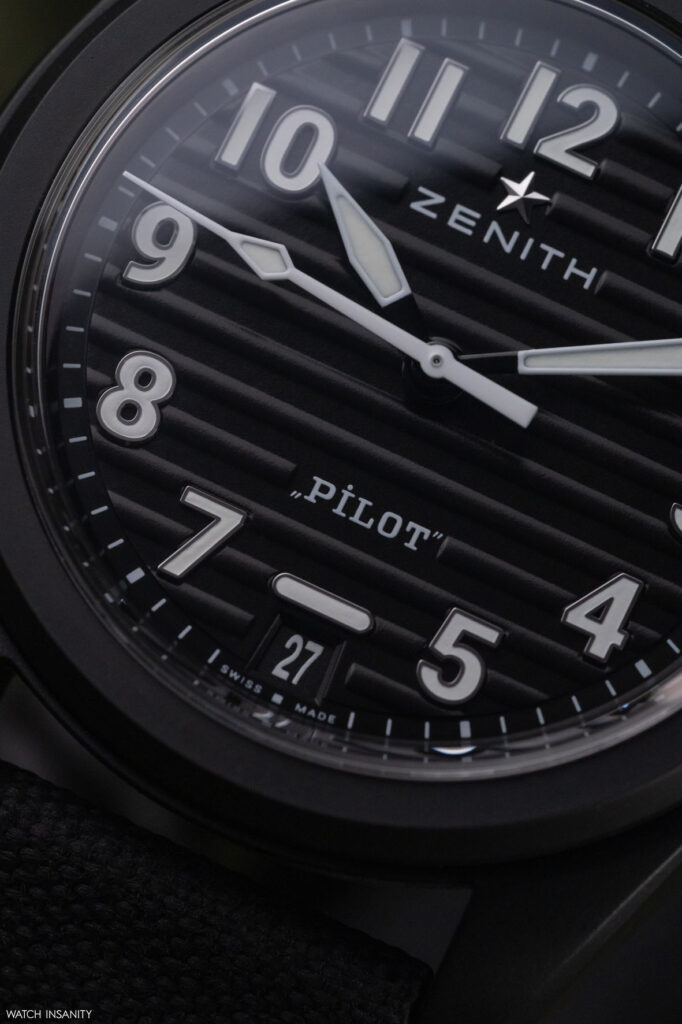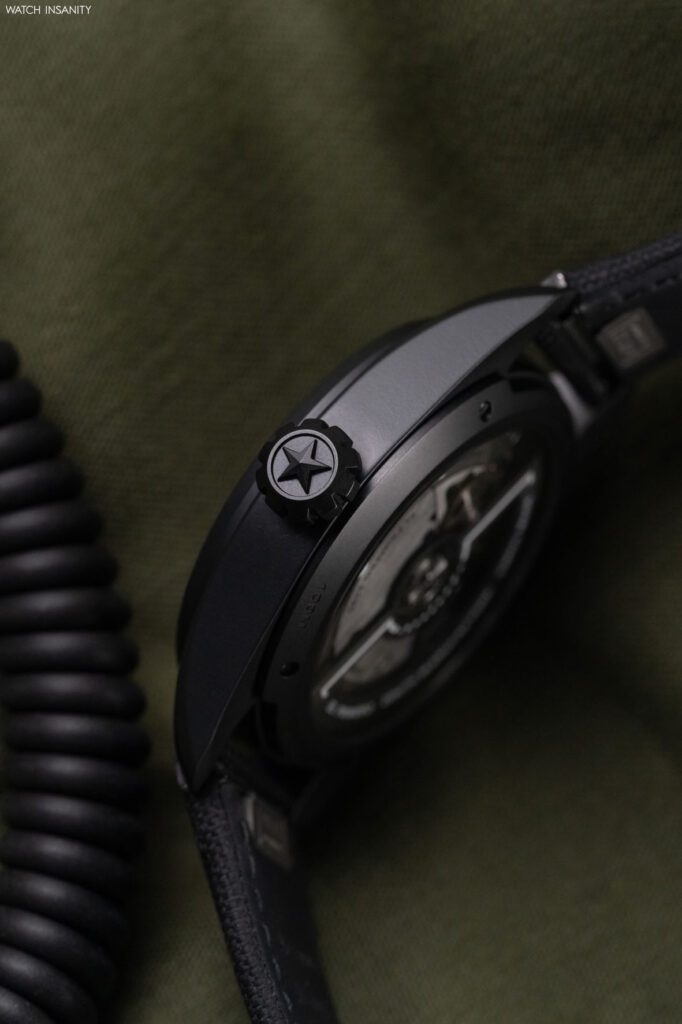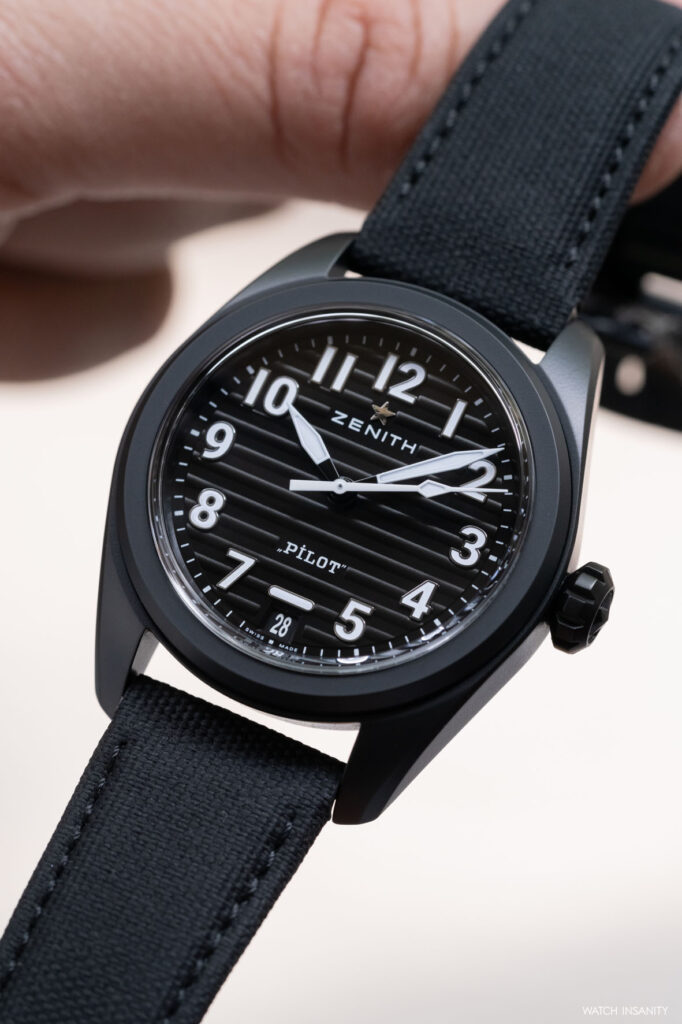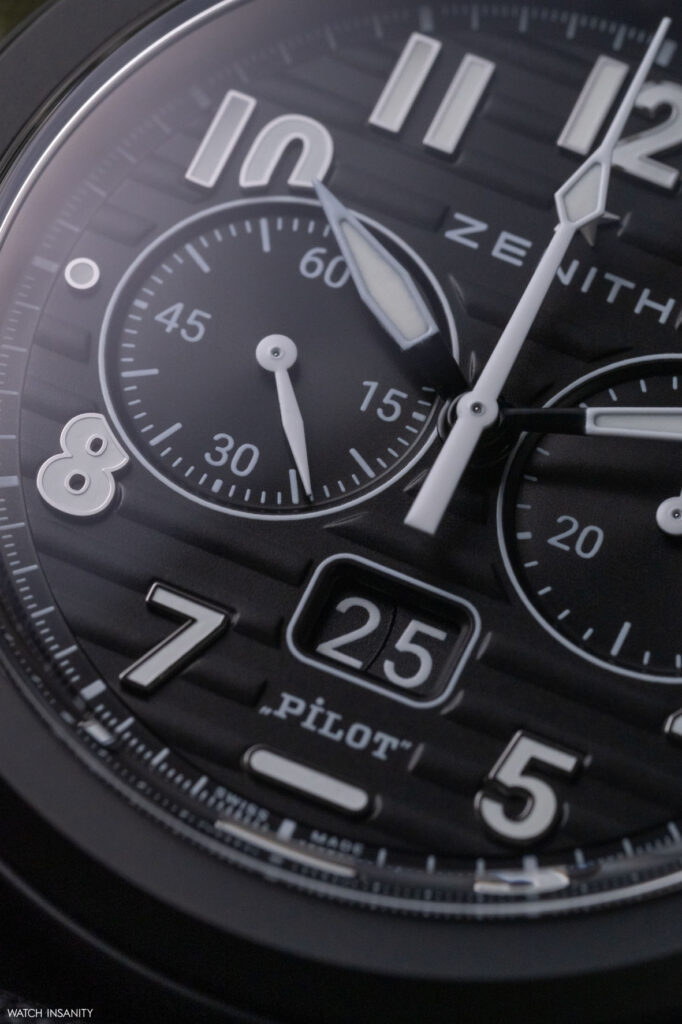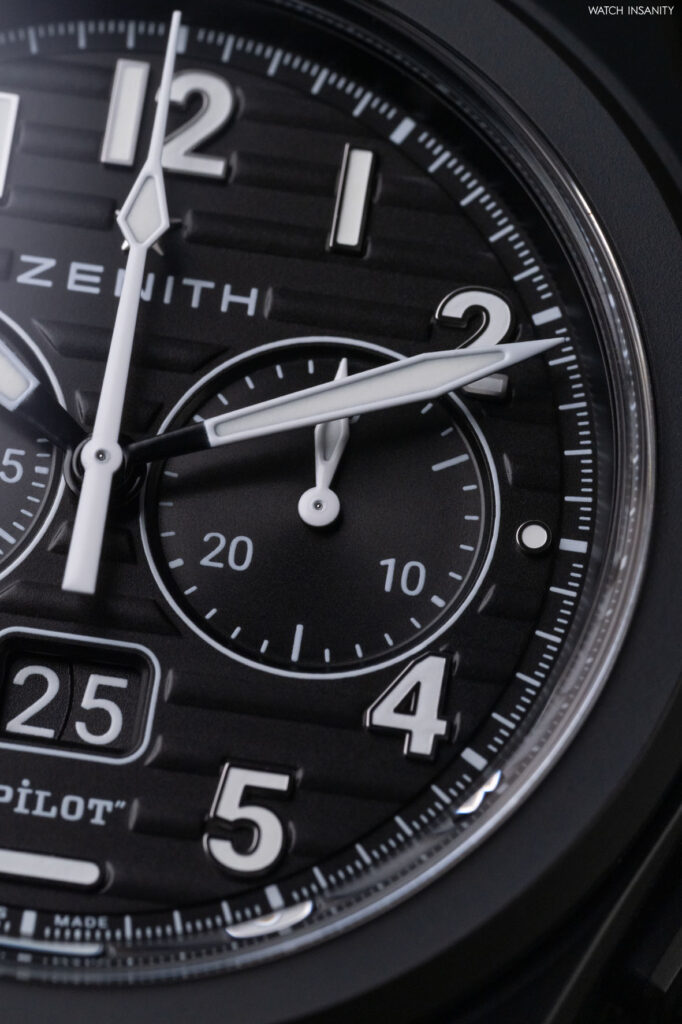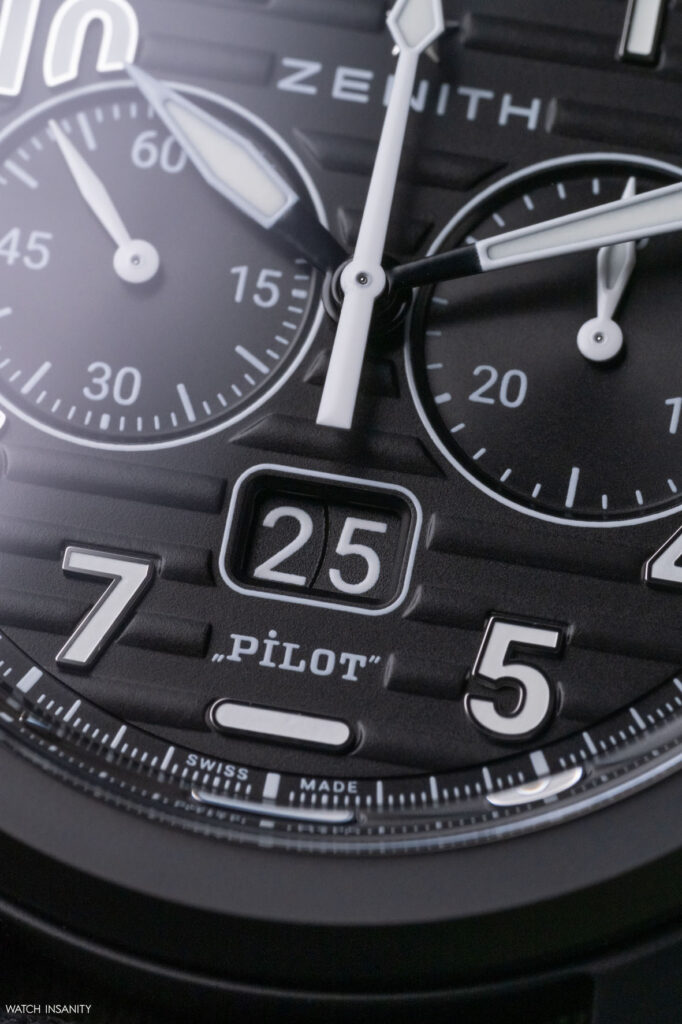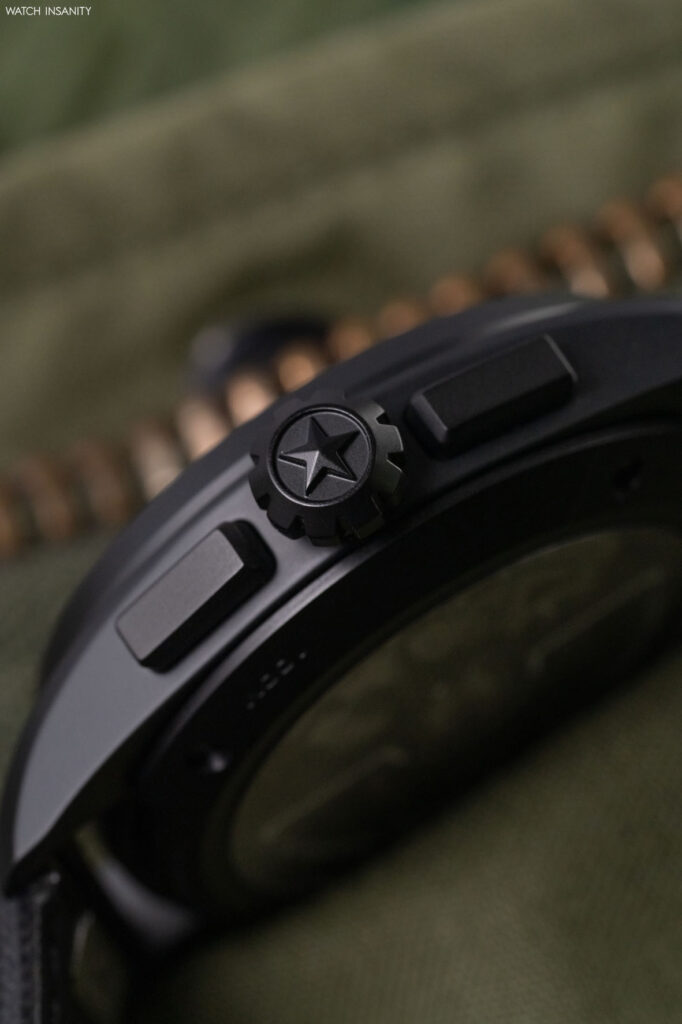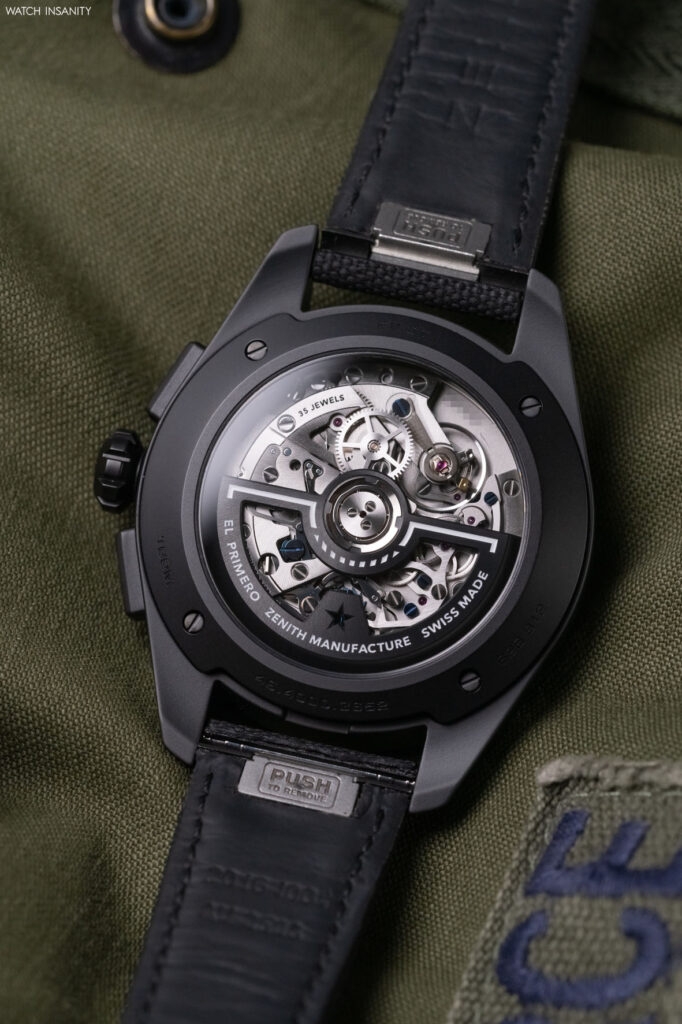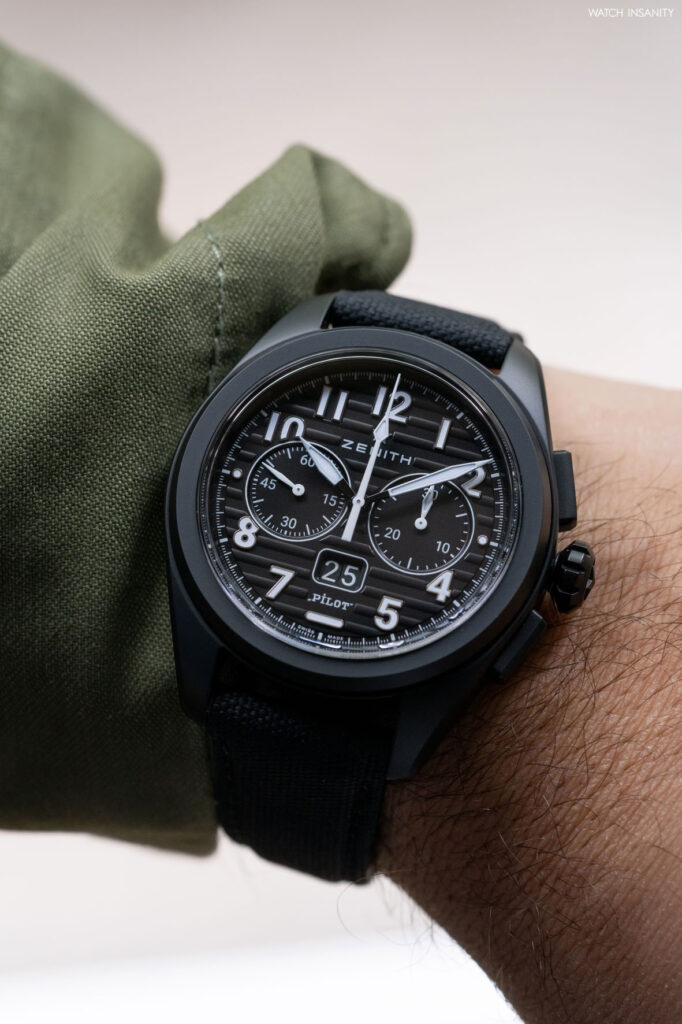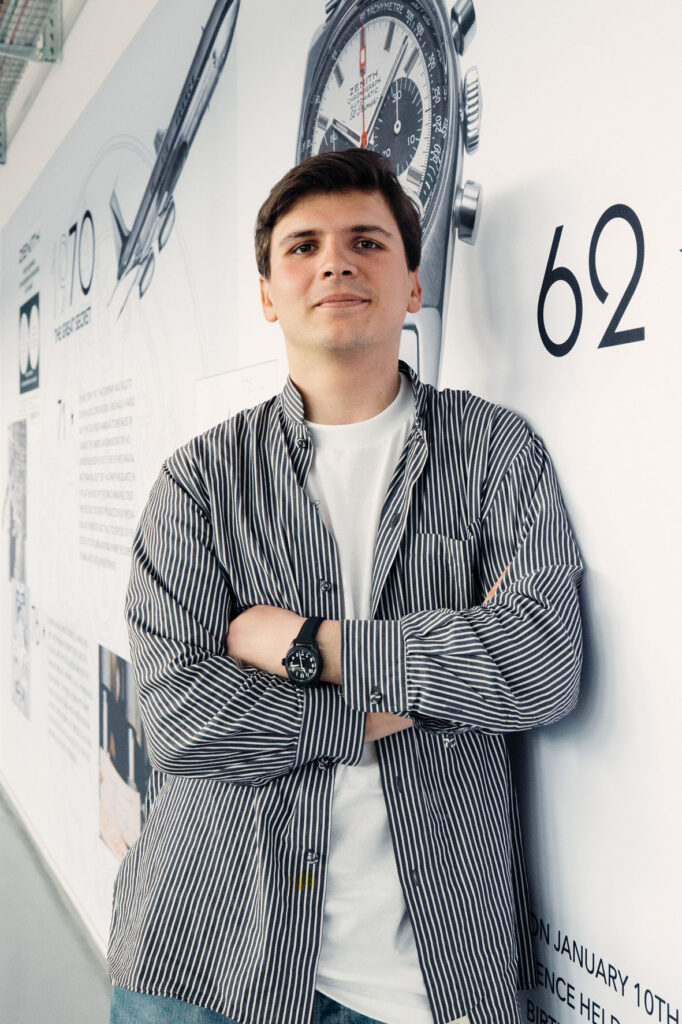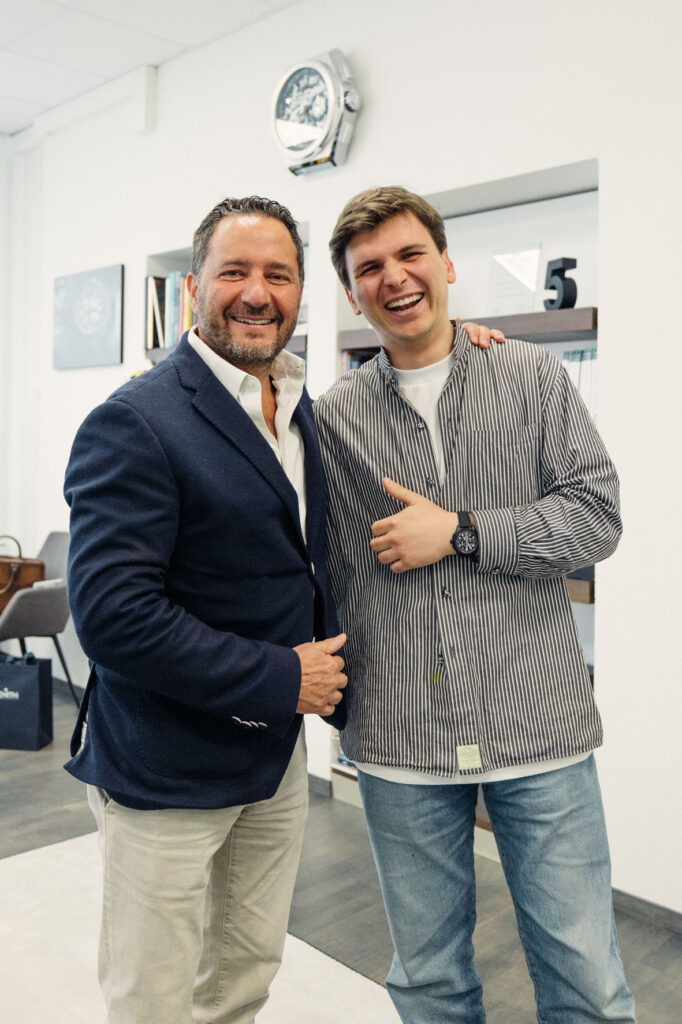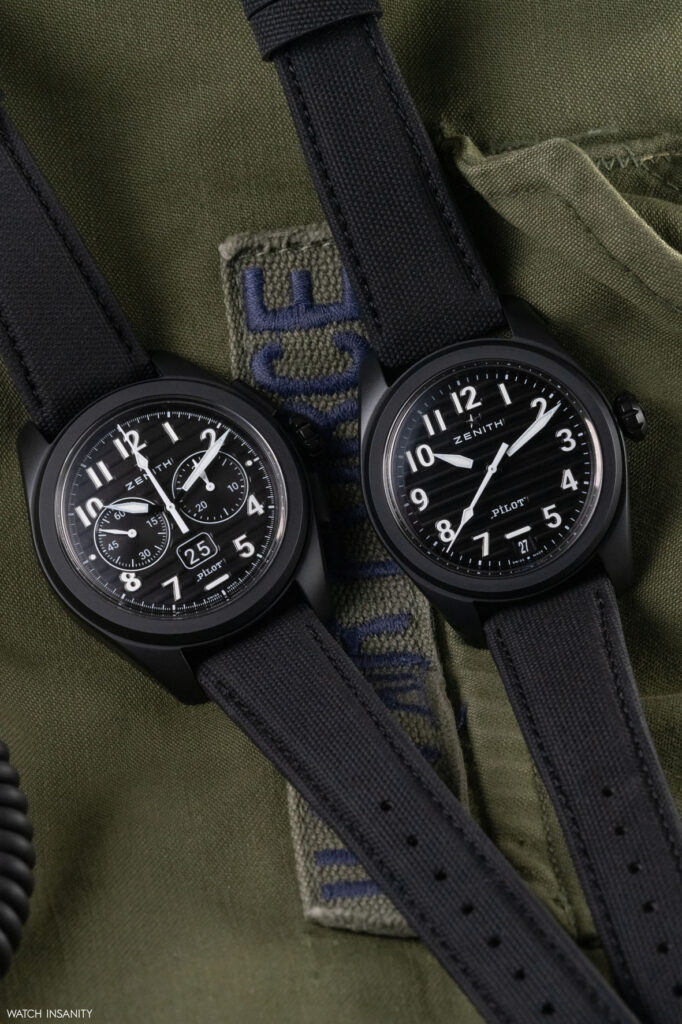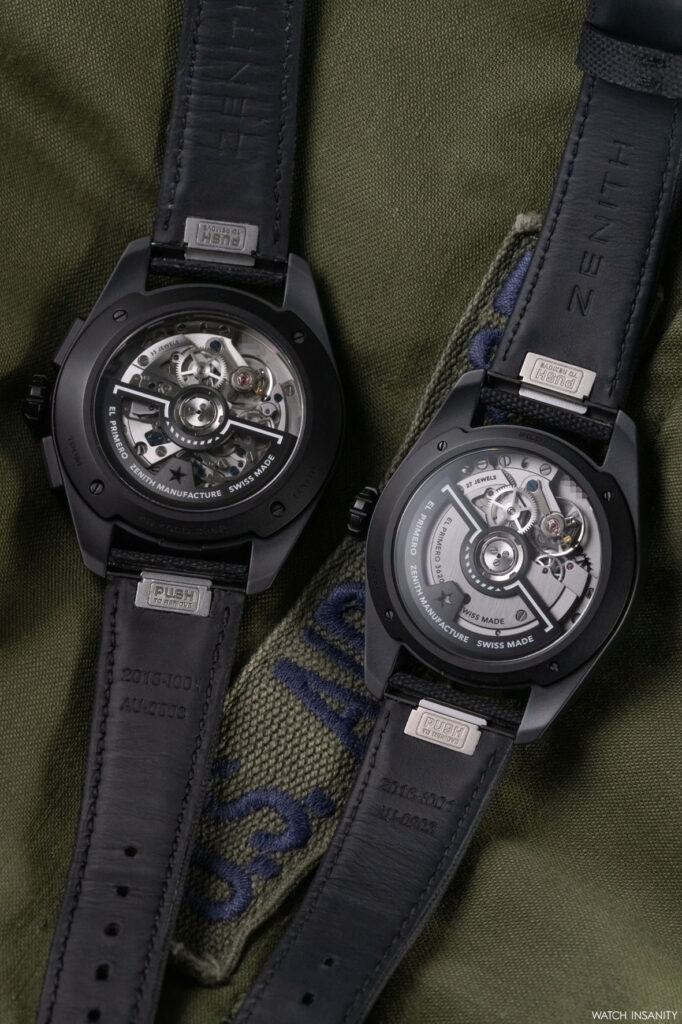Zenith takes off with the new Pilot
5 June 2023Nelson Mandela said that starting a revolution is easy, but carrying it on is very difficult. This year, at Watches and Wonders, Zenith started its Pilot line revolution. We hope it will carry it on, because the new Pilots presented in Geneva are truly beautiful and interesting.
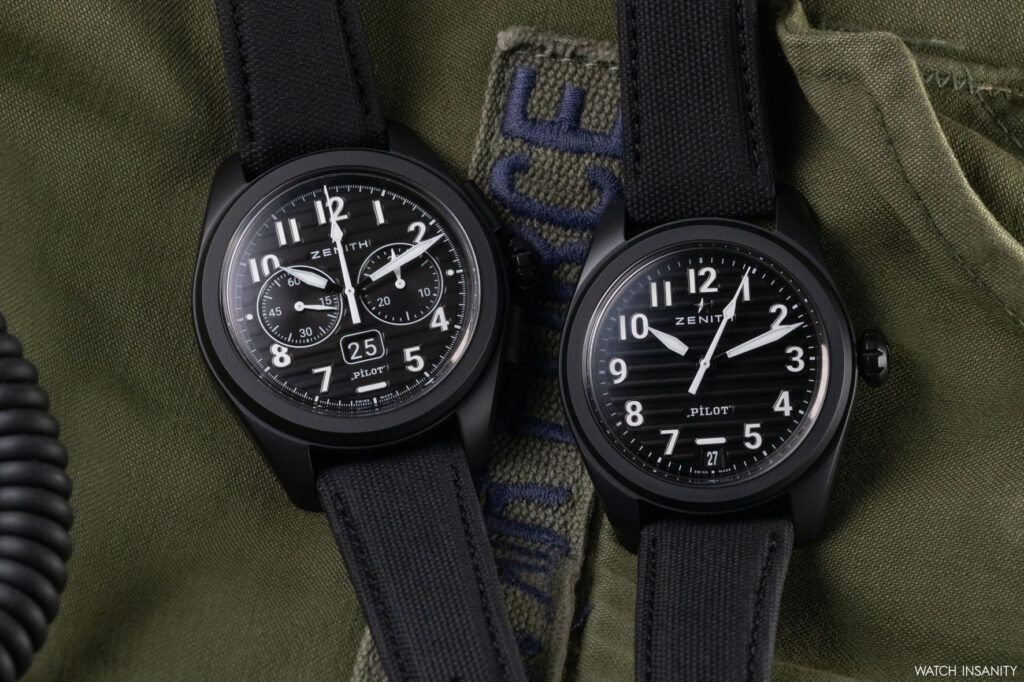
After all, Zenith is one of the first brands to have developed watches specifically designed for aviation. Let us not forget that when the Frenchman Louis Blériot made the first flight across the Channel in 1909, aboard the aircraft he had built based on a design by the Italian Anzani, he was wearing a Zenith on his wrist. The watch was useful for calculating the flight time necessary to cover the forty kilometers as the crow flies from Calais to Dover.
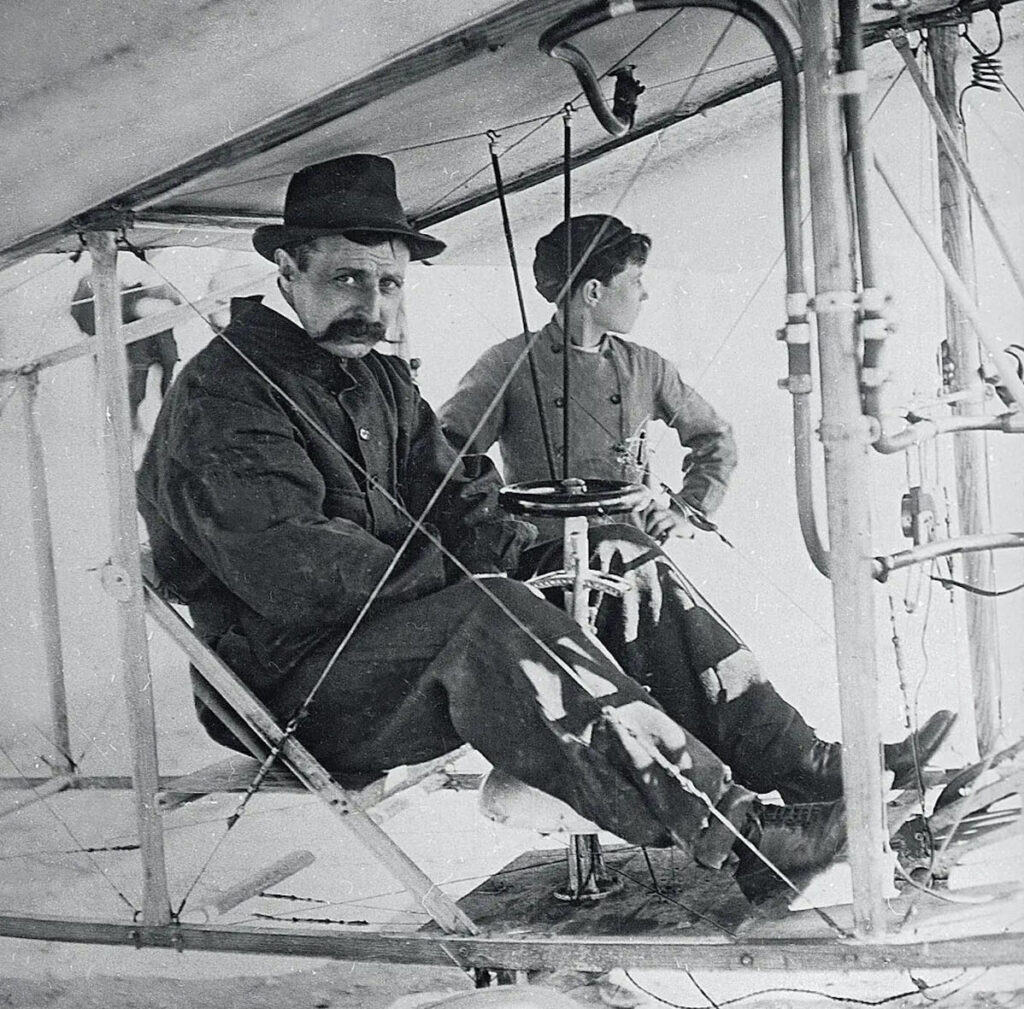
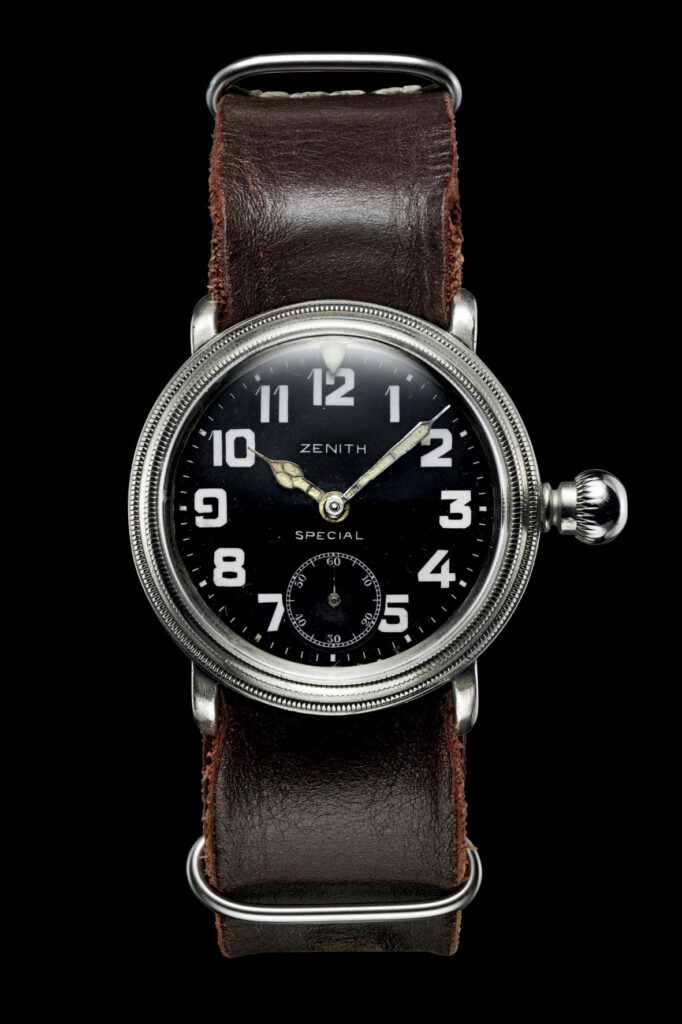
It was a pilot’s watch typical of the time. It had a chromed case with fixed lugs, a black enamel dial with large Arabic numerals and cathedral hands. Another distinguishing feature was the large onion-shaped crown, set on an elongated pin for easy adjustment when wearing gloves.
THE ORIGINS OF THE ZENITH PILOT
Starting from 1939, Zenith began producing the Type 20 Montre d’Aéronef (aircraft watch), a hand-wound cockpit watch. It was mounted on the dashboard and was found on many French aircrafts of the time. A fluted bezel was used to wind and adjust it. In recent years, this instrument has inspired the Pilot Type 20 Montre d’Aéronef and the entire Pilot Type 20 line, which interprets the brand’s idea of an aviator’s watch, both chronograph and three-hander.
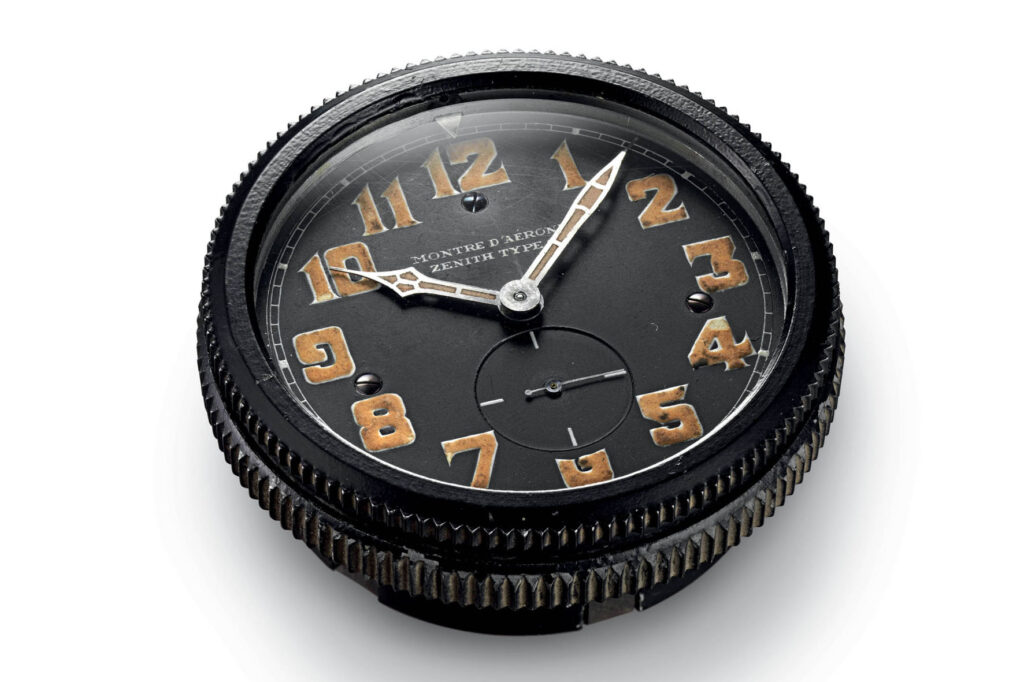
In other words, timepieces with recognizable stylistic features rooted in history. Oversized cases in steel or bronze (remember the 57.7 mm of the Montre d’Aéronef from 2012, but also the 48 of the following references), large luminescent Arabic numerals, black or, at most, anthracite or dark green dials, large onion crown, hand-wound movement.
THE CHRONOGRAPH FOR A. CAIRELLI
In the history that ties Zenith to flight there is also another famous reference, the so-called A. Cairelli “Tipo CP-2” chronograph. In the early 1960s Zenith provided these pilot chronographs to A. Cairelli, a Rome-based dealer who supplied the Italian Army, mostly with Zenith and Universal Genève watches.
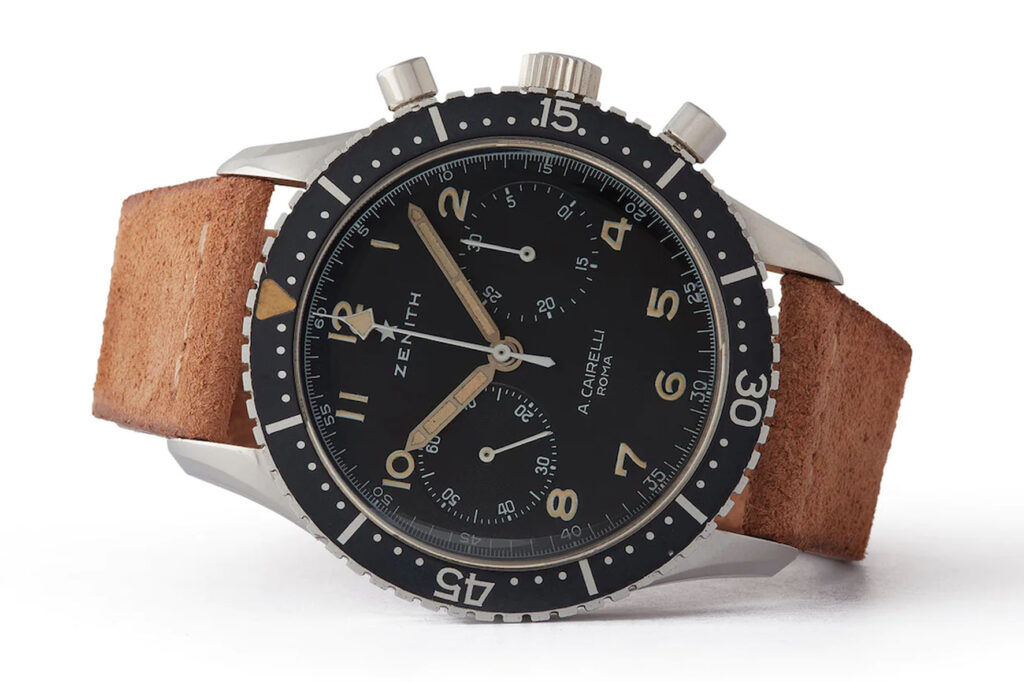
The A. Cairelli “Tipo CP-2” chronographs were equipped with caliber 146 DP, a manual-winding chronograph movement made by Zenith in a factory that belonged to Martel Watch. Zenith had taken over Martel several years earlier for its expertise in chronograph movements, and introduced the El Primero based on that know-how in 1969. These chronographs, mainly in the Italian Air Force, replaced the CP-1s created by Leonidas.
After the years of the A. Cairelli chronographs, Zenith withdrew from the aviator watch segment. Although it had already registered the French term “Pilote” in 1888 and the English “Pilot” in 1904 in relation to watches – it is still today the only brand that can use this word on the dial –, Zenith did not create significant pilot collections until Jean-Frederic Dufour took over as CEO in 2009. Since then, the Le Locle brand has dedicated its Pilot collection to aviator timepieces, keeping the retro style very close to that of the origins mentioned above.
Over the years, Zenith tried to tie the collection not only to flight but also to the world of vintage motorcycles. Moreover, in recent years there has been a beautiful reissue of the Cairelli with the Zenith Heritage Chronograph Tipo CP-2, a flyback chronograph powered by the El Primero caliber. All these watches, however, were in the aesthetic and technical groove of tradition. Until now.
RESTARTING FROM SCRATCH
The renewed Pilot collection that Zenith presented at Watches and Wonders was redesigned from the ground up and, for many aficionados, it was a surprising choice. The collection leaves the vintage aesthetics aside for something that, as the brand explains, ‘draws inspiration from the entire span of aviation, past and present’.
The main features – durability, legibility and intuitive reading of information – respect the Pilot codes that Zenith defined over a century ago with some of its early pilot’s watches and navigation instruments. What has now changed is the more contemporary aesthetic reinterpretation, with style touches typical of the brand, and discreet references to the world of aviation and its history.
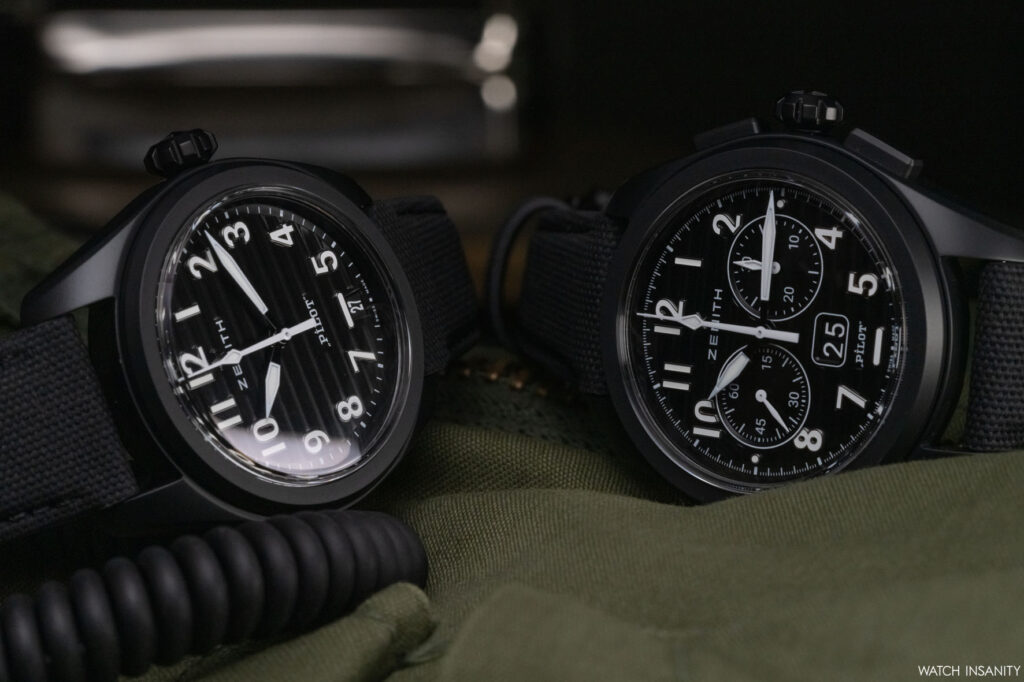
The result is high-level. We’re saying this because we had the opportunity to touch and try on the watches in Geneva, and the feeling was incredible. One of the few real novelties, capable of surprising because it marks a clear break with the past of the collection and with what we were used to seeing. And breaking the rules is often a good thing, not just in watchmaking.
THE NEW ZENITH PILOT AUTOMATIC
The new Zenith Pilot collection consist of a three-hander and a chronograph with a ceramic case (the star of our exclusive shooting), and a three-hander and a chronograph with a steel case. Both versions have a 40 mm case, a small size we are not used to when we think of an aviator’s watch. Yet the clarity and legibility are not compromised by this size.
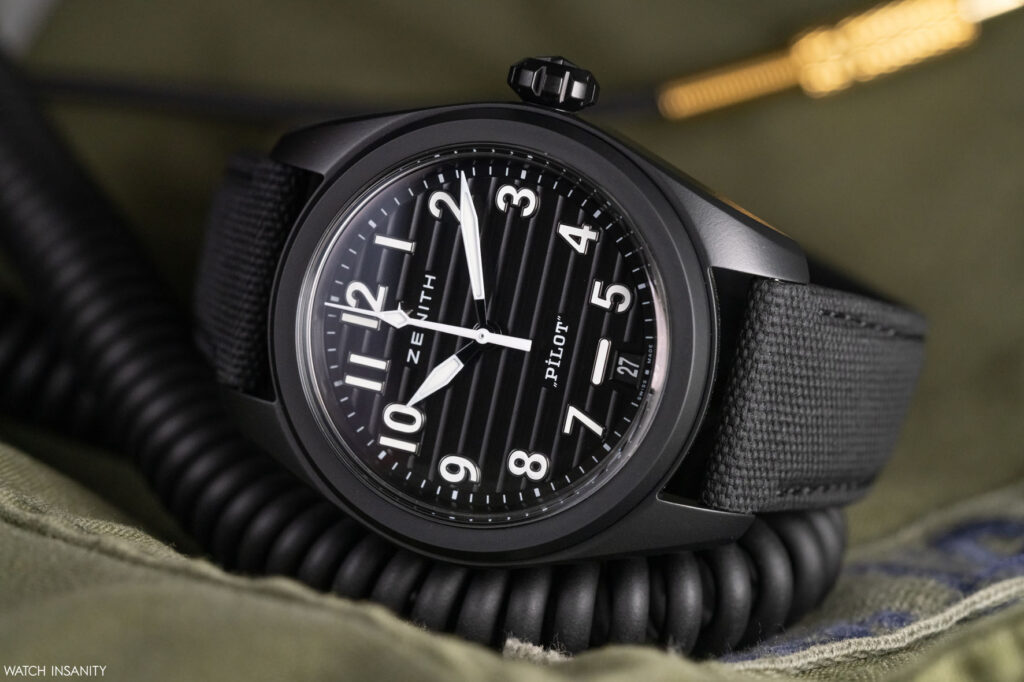
The case has a completely new design, with a round and flat bezel fixed on top. On the steel version, the surfaces are vertically satin-brushed and the rounded parts are shiny, the black ceramic case is entirely micro-blasted with a matte finish. While the case of the Type 20 was completely circular with wire lugs, this one is more modern, thanks to the flat bezel and the wide, more wearable lugs, which help fit thanks to a lug-to-lug of 49.6 mm and a thickness of 12.9.
The crown was also redesigned, with a diamond shape and deep notches. While it’s not onion-shaped like the previous ones and it’s not as oversized as the ones we’re used to, it’s still easy to grip and use.
READABLE AND ESSENTIAL
Even the dial of the new three-hander Zenith Pilot has completely changed look. The large painted Gothic numerals and cathedral-shaped hands of previous models give way to modern applied Arabic numerals and dagger-shaped hands. Both are generously filled with Super-LumiNova, on a black opaline dial with horizontal grooves. A process that, Zenith recalls, ‘mimics the look of corrugated metal sheets that make up the fuselage of many older aircrafts’.
The date window is a 6 o’clock, with white numbers on a black background. It is topped by a horizontal index which should recall the artificial horizon instrument aboard aircrafts. In this sense, it should allow the wearer to understand their orientation even in the dark, helping them to read the time without hesitation. Immediately above it is the Pilot lettering, which counterbalances the Zenith logo and star in the upper half of the dial.
THE CALIBER AND THE STRAP
The Zenith Pilot Automatic is powered by the in-house El Primero 3620 automatic caliber, the same which powers the Defy Skyline. Unlike the latter, on the Pilot there is no small tenth-of-a-second counter while there is the classic central seconds hand. Like all El Primero movements, it oscillates at 36,000 vibrations/hour, with a 60-hour power reserve.
The finish of the movement is rather essential, with a vertical satin finish and a black skeleton oscillating weight. This is distinguished by the white decoration on the two arms recalling the design of the artificial horizon, which informs the pilot on the alignment of the aircraft with the Earth’s horizon.
Each of the two models comes with a double strap. The steel model has a black one in cordura-effect rubber and one in brown calfskin that recalls vintage aviator equipment, from the jacket to the gloves. The ceramic reference also has a black cordura-effect rubber strap with folding buckle, as well as a khaki-colored one in the same material. Both can be replaced without the use of tools thanks to the quick release mechanism integrated into their back.
ZENITH PILOT BIG DATE FLYBACK
As much as the three-hander is a watch of remarkable workmanship, Zenith has kept the real twist for the Pilot Big Date Flyback. The finishes of the case and the dial are the same as the three-hander model, so it is good to focus on the differences, starting with the size. The chrono case is 42.5 mm wide by 14.3 mm thick (of which 2 mm in domed sapphire crystal), with a lug-to-lug of 51.4 mm.
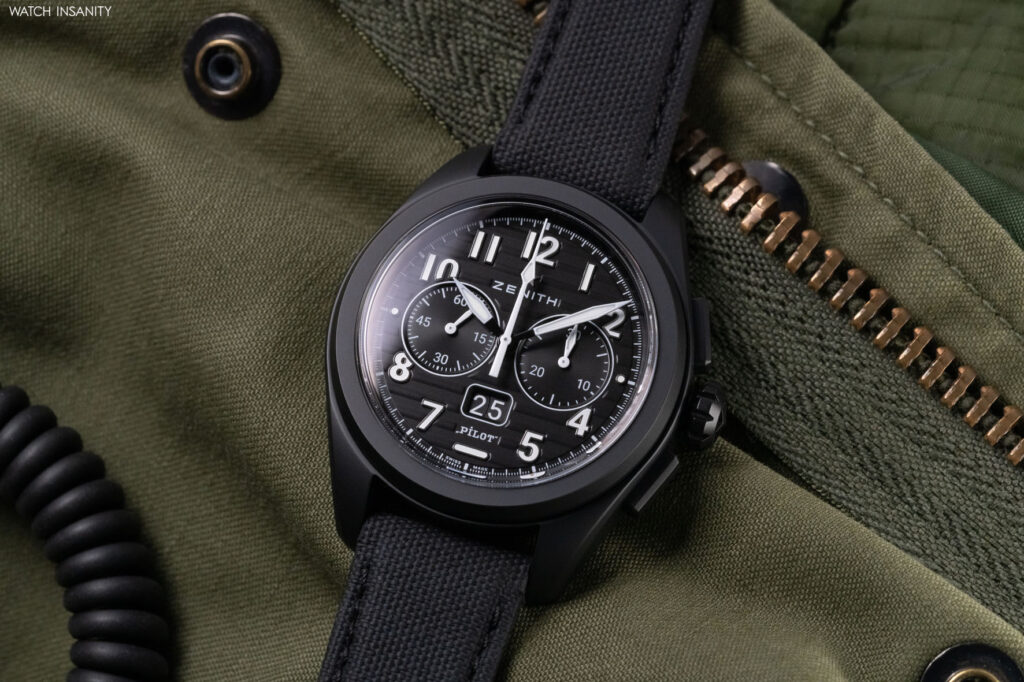
The graphics of the dial are the so-called bi-compax, i.e. double counter, with the 30-minute one at 3 o’clock and the continuous seconds one at 9 o’clock. The counters are bulky and cut the 2, 4, 8 and 10 indexes quite a bit. The 3 and 9 disappear, replaced by two dots well filled with Super-LumiNova.
However, it is the big date at 6 o’clock that steals the show. So big that the word Pilot ended up underneath, in the only space left available, above the same horizontal index present on the three-hander. The big date recalls the one we find in some Saxon brands, but to the more attentive it should also recall the Zenith Pilot Big Date Special 2012, launched by the brand on that same year at Baselworld and powered by the El Primero 4010 caliber. The last Pilot with that style, before the vintage turn that has accompanied us until now. The date is instantaneous: the two discs take only 0.02 seconds to jump and stabilize. And, at the moment of jumping, they make exactly the same sound as the departures and arrivals flight boards at airports.
Finally, style. In the version with a steel case, the 30-minute counter’s frame has touches of yellow, green and blue, and the red hand recalls the famous 1997 El Primero Rainbow Flyback, one of the most sought-after references. The red chronograph hands and the green, yellow and blue markings undoubtedly make the watch very striking. This tribute to the Rainbow Flyback is also the perfect way to celebrate the return of the flyback function to the Pilot collection.
EL PRIMERO ALL THE WAY
The watch is powered by the new El Primero 3652 flyback caliber, which allows consecutive events to be timed without having to stop, reset and restart the chronograph. Simply press the pusher below the crown during timing to instantly restart the chrono from zero. The caliber has the same 5Hz frequency and 60-hour power reserve as the three-hand 3620, but is far more complex.
The 30-minute chronograph has a column wheel for smooth engagement, and the lateral clutch makes it architecturally pleasing. After having personally tried to start and reset the chrono, we can say that these buttons are undoubtedly among the smoothest currently on the market. The combinations between case material and double strap are the same as for the three-hander.
A CONTEMPORARY PILOT
From the pilot who challenges the potential of his aircraft like Louis Blériot, to a new concept of pilot as a contemporary explorer, searching for experiences and sensations. Like the DJ and content creator Klaus, the contemporary face of the Pilot series.
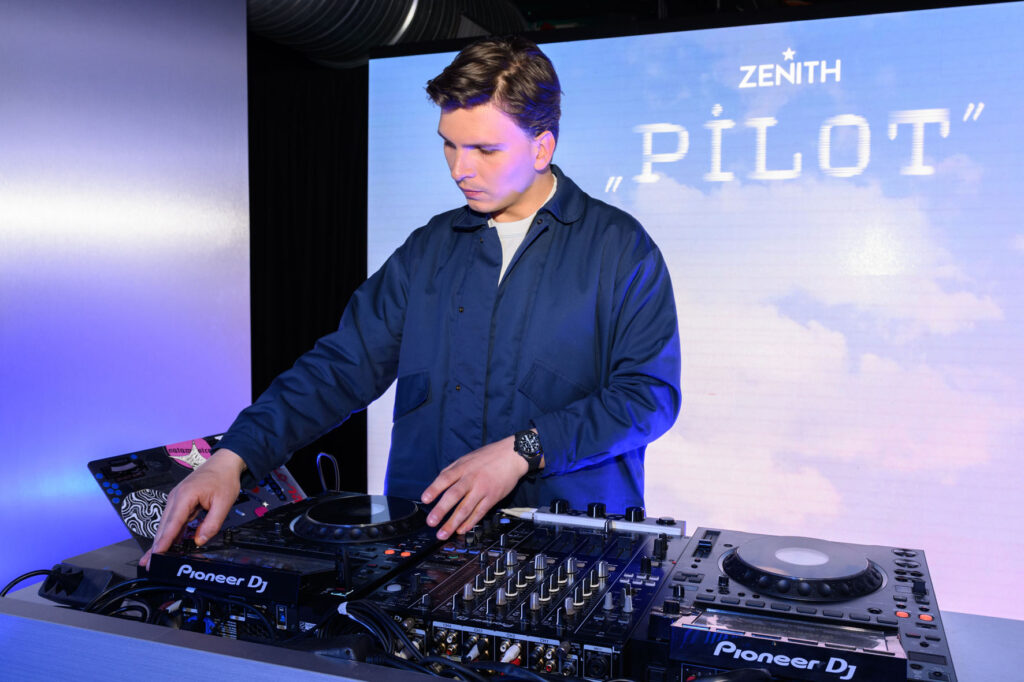
Klaus interprets Zenith’s claim “Time to reach your star” through his career as a music producer, which combines the promotion of culture through the concept of travel as an inexhaustible source of new educational experiences. They create bridges between his passions – music, nature – becoming creative inspiration to share with his followers.
The concept of pilot today can be translated as a person hungry for new experiences, sensations, as a traveler between different cultural and natural places, who makes inclusion wide horizons the ways to reach his own star.
Finally, the prices. The Big Pilot Automatic costs 8,100 euros in the steel version and 10,300 in the ceramic one. The Pilot Big Date Flyback, on the other hand, costs 12,300 euros in steel and 14,500 in ceramic. Those prices are in line with what we can expect from these watches. With them, Zenith gave a sharp turn to one of their historic collections, without fear of daring. And the result, in our opinion, proves that they were right.
By Davide Passoni

